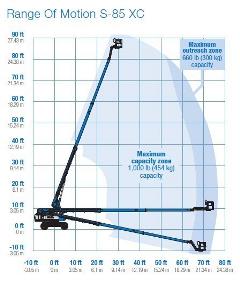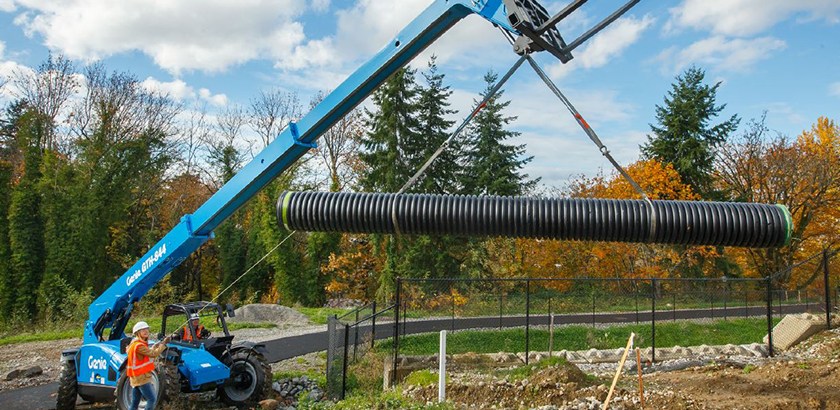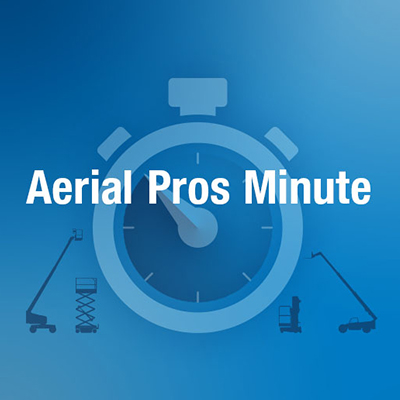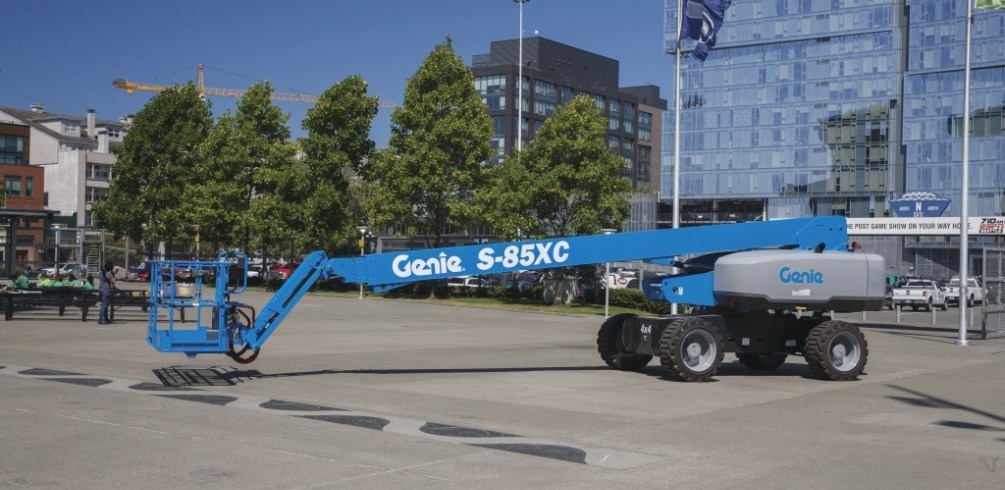Is Boom Lift Range of Motion Becoming Like a Telehandler’s?
by Sean Larin - Product Manager On May 2, 2019, 03:00 AM
Subscribe To Aerial Pros
Filter by tags
Due to upcoming industry-wide changes and more high-capacity machine choices on the market, operator knowledge of the total platform load requirements, as well as how the sloped terrain of the jobsite will impact operation, will now be equally as important to know as the required working height and maximum working outreach.
As new boom lifts built to comply with the ANSI A92 and CSA B354 standards begin to enter the market, rental house personnel will need a deeper understanding of product features to ensure that they recommend the right boom for each unique job application. In the future, recommending the correct boom lift will be similar to recommending the telehandler for rental. This is because the range of the operating envelope on today’s boom lifts increasingly depends on the weight being lifted.
Telescopic and articulating boom lifts rotate, elevate and extend multiple boom sections to help operators access difficult to reach worksites. The work area that each boom lift model can access is determined by the combination of its vertical height and horizontal outreach capabilities — commonly referred to as its range of motion, or working envelope. Range of motion charts for each model are available in each machine’s Operator’s Manual and specification sheet.
 Increasingly, a boom lift’s range of motion chart might provide additional guidelines for dual (two) capacity work envelopes. The maximum reach of the machine will depend on the total platform load weight, including operators, platform accessories, tools and materials. This dictates which working envelope capability the machine is approved to use within its full operating envelope.
Increasingly, a boom lift’s range of motion chart might provide additional guidelines for dual (two) capacity work envelopes. The maximum reach of the machine will depend on the total platform load weight, including operators, platform accessories, tools and materials. This dictates which working envelope capability the machine is approved to use within its full operating envelope.
The “unrestricted platform capacity” operating zone usually specifies a load limit able to reach all areas within the machine’s full range of motion. Single capacity boom lifts will only have an unrestricted capacity limit range of motion, while dual capacity boom lifts have both unrestricted and restricted. The “restricted platform capacity” zone is usually a higher maximum load limit that enables restricted movement within the “maximum capacity zone” within a segment of the machine’s work envelope indicated on the range of motion chart.
Once operating the boom lift, some models, such as the Genie S-85 XC boom lift, will provide a restricted range of motion indicator light on the control panel that lights up to indicate restricted range of motion due to platform weight. To avoid running into unexpected limits, operators need to accurately plan for the weight they need to lift, as well as the height, to ensure they’re renting the right boom lift to complete their work at height.
To limit the effect of this on productivity, some models, such as the Genie S-85 XC boom lift, will provide an increase chassis angle rating that is achieved by restricting the range of motion to a stable size while on slopes or uneven surfaces. A light on the control panel indicates restricted range of motion, while enabling the operator to complete work at height within a reduced work envelope.
Operators will need to understand the equipment needs of each specific application in advance. Certain environments may require ground cribbing to be used, or even a larger boom lift with a longer outreach from chassis to platform, to access the work at height from another position.
Related Posts

Spec’ing a Telehandler for Productivity
The telehandler’s ability to lift, move and place a range of materials and tools make it an indispensable machine for elevating efficiency and productivity on the job.
Continue Reading

Aerial Pros Minute: Telehandler Auxiliary Hydraulics
Learn more about telehandler auxiliary hydraulics in this month’s Aerial Pros Minute:
Continue Reading

Aerial Pros Minute: Telehandler Load Center
Learn more about Telehandler Load Center in this month’s Aerial Pros Minute.
Continue Reading


